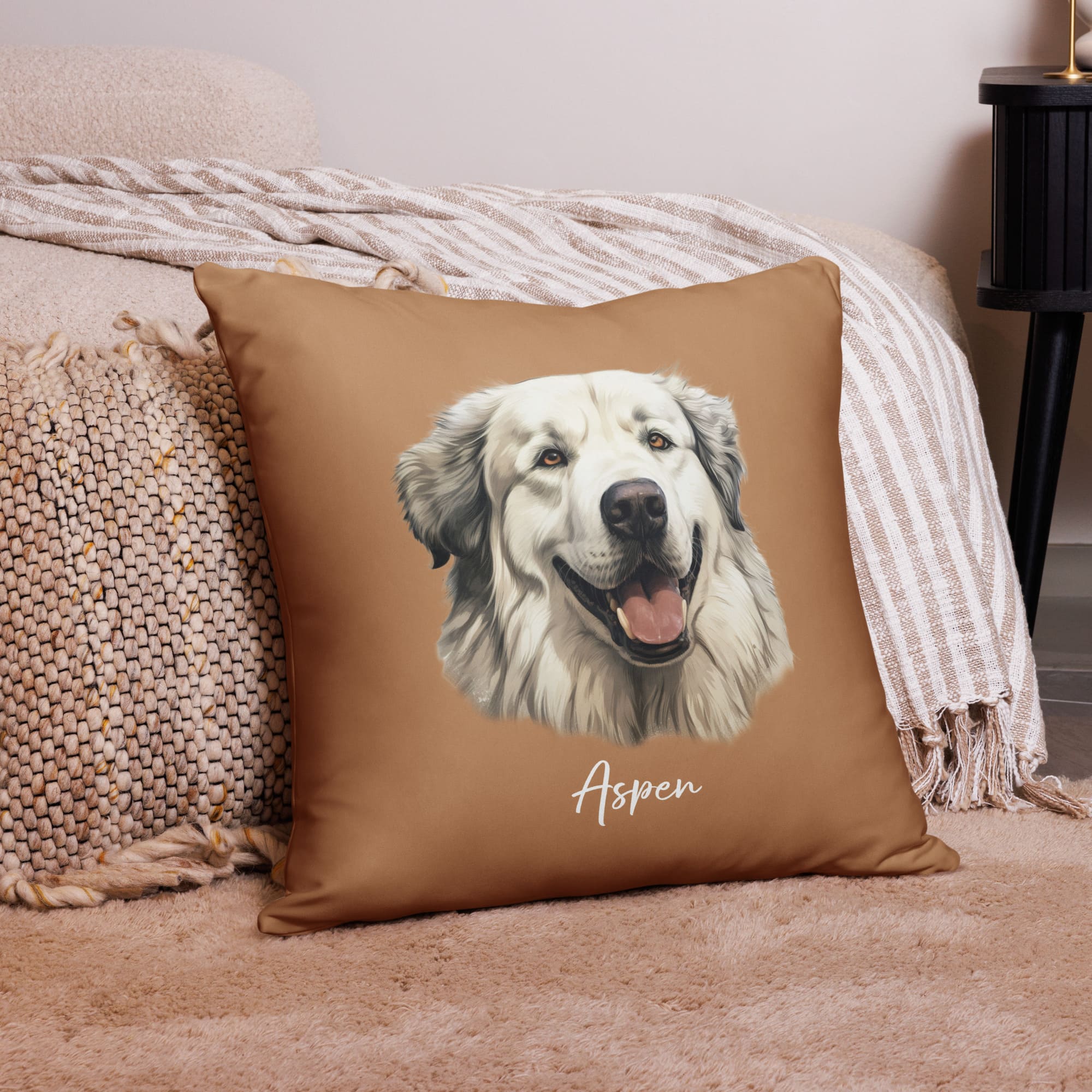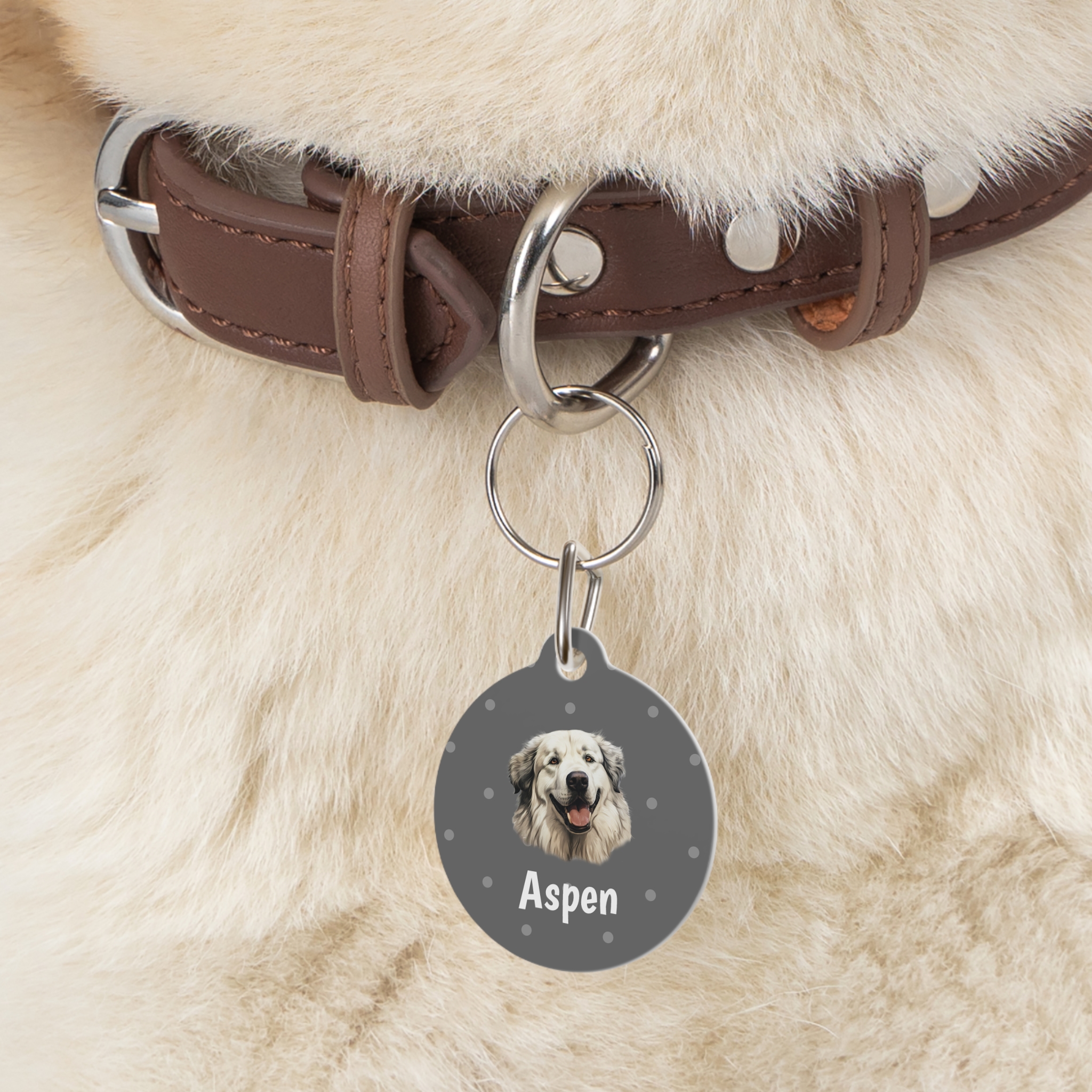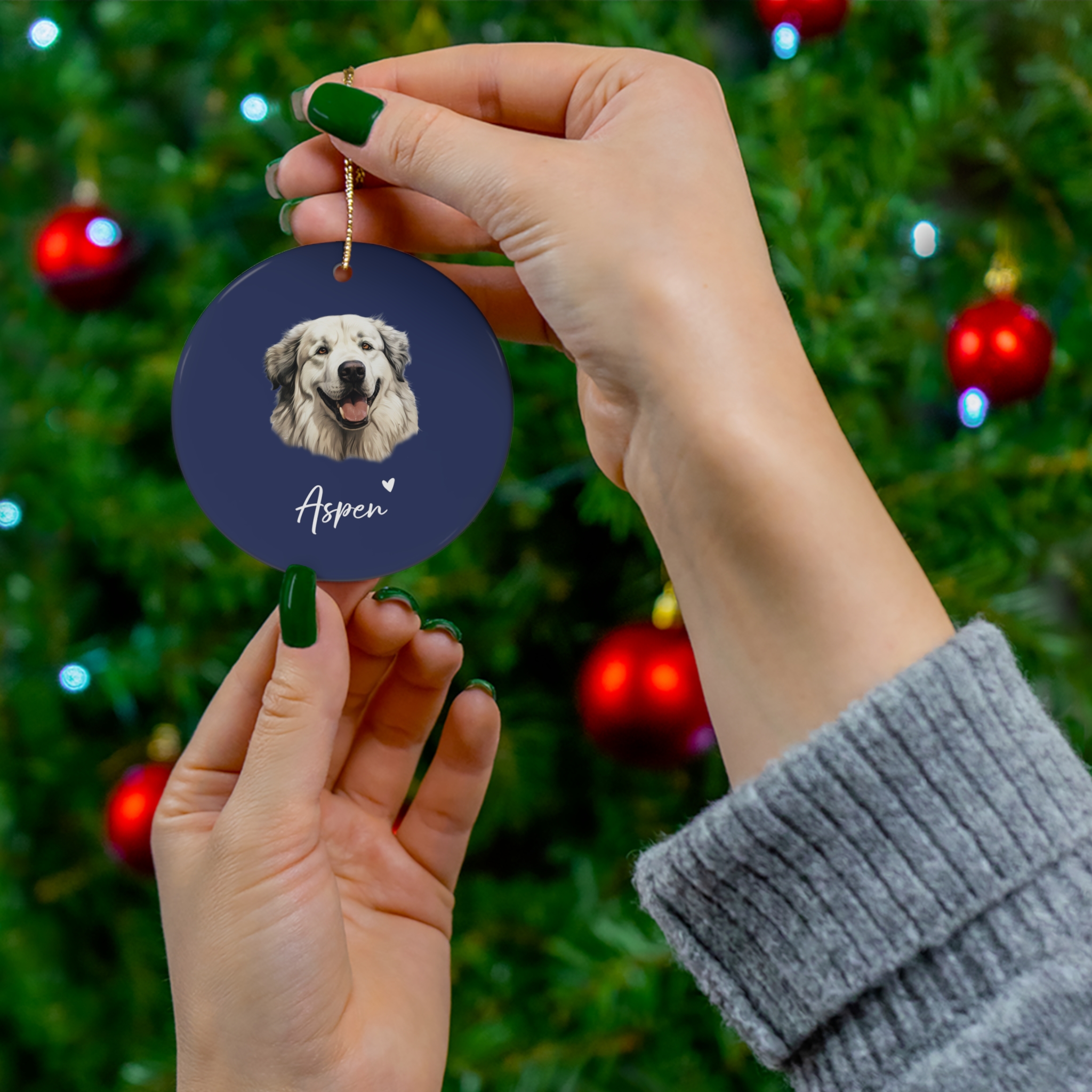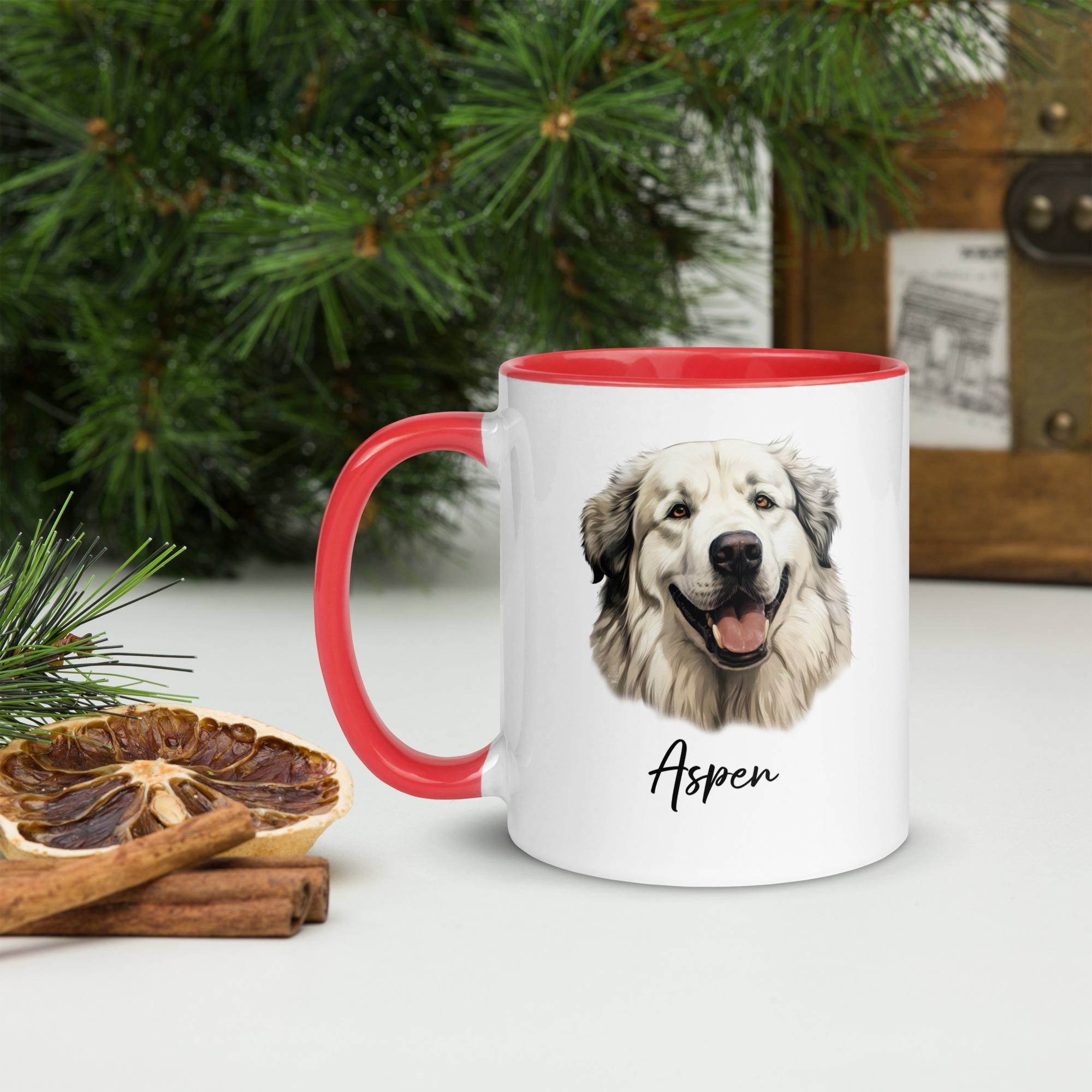Breed Overview
What to Know About: Great Pyrenees
The Great Pyrenees, also called the Pyrenean Mountain Dog, is a majestic, powerful breed known for its calm, gentle demeanor and its protective instincts. Originally bred to guard livestock in the Pyrenees Mountains, these dogs are deeply rooted in history, known for their unwavering loyalty, courage, and affection..
- Coat: They are known for their fluffy white coats, which may have gray or tan markings, or white coats with yellow markings. The undercoat is soft and wooly, while the outer coat is long and straight
- Temperament: Gentle, calm, loyal, watchful, independent
- Exercise needs: These dogs need moderate exercise, such as daily walks or hikes
- Training: Great Pyrenees are intelligent dogs, but they can be stubborn. They are best trained with positive reinforcement methods
- Grooming: Weekly brushing is a must to prevent matting, and during shedding seasons, more frequent grooming (about twice a week) is necessary
Dog Breed Characteristics
Great Pyrenees: A Majestic Guardian Dog
Weight
85-150 pounds (38-68 kg)
Height
25-32 inches (63-81 cm) tall at the shoulder
Origin
Pyrenees Mountains between France and Spain
Life Span
10 to 12 Years
History and Origin
The Great Pyrenees breed traces back thousands of years to the Pyrenees Mountains, a natural border between France and Spain. The breed was initially developed by shepherds to protect flocks of sheep from predators such as wolves and bears. These dogs were prized for their independence, intelligence, and dedication to their role as guardians.
In the 17th century, the breed caught the eye of French nobility and was recognized as the “Royal Dog of France.” Their reputation quickly spread across Europe. The Great Pyrenees was officially recognized by the American Kennel Club (AKC) in 1933, solidifying its place as a beloved companion in the modern world.
Physical Characteristics
-
Size: The Great Pyrenees is an imposing breed. Males typically stand between 27 to 32 inches tall at the shoulder and weigh 100 to 150 pounds. Females are slightly smaller, measuring 25 to 29 inches tall and weighing 85 to 130 pounds.
-
Coat Colors and Patterns: The Great Pyrenees boasts a thick, double coat. The outer coat is long, straight, and weather-resistant, while the undercoat is soft and wooly. Their fur is predominantly white, though some may have markings in shades of gray, tan, or pale yellow, usually around the ears and face.
-
Lifespan: On average, the Great Pyrenees lives 10 to 12 years, though this can vary based on individual health and genetics.
Temperament
General Disposition
The Great Pyrenees is often described as a “gentle giant” due to its calm and composed temperament. These dogs are incredibly affectionate with their families and tend to form deep bonds with their human companions, especially children. Their protective instincts make them excellent guardians of both home and family.
Personality
Though they’re gentle, the Great Pyrenees can be independent and somewhat stubborn. They’re not always eager to please, so training can be a bit of a challenge. However, their deep intelligence and loyalty make them great learners when motivated by positive reinforcement.
Behavioral Traits
Great Pyrenees are natural watchdogs. They have a strong guarding instinct and often display their protective nature through barking, particularly at night. Barking is their way of keeping an eye on potential threats, which is part of their heritage as flock guardians.
Sociability with Children and Other Pets
The Great Pyrenees is typically gentle and patient with children, making them a popular choice for families. They can be protective over the little ones, often acting as their guardians. When it comes to other pets, especially smaller animals, proper socialization is key. Their strong prey drive might make them more inclined to chase smaller creatures, but they can live peacefully with other dogs and pets if introduced correctly.
Great Pyrenees in numbers
Key Statistics About Great Pyrenees
Explore key insights and statistics about the Great Pyrenees, shedding light on their guarding instincts, family-friendly nature, common health considerations, and more. These percentages offer a quick glance into what makes this majestic breed so special!
Things to Know When Owning a Great Pyrenees
Owning a Great Pyrenees comes with a set of care needs that should be considered before bringing one into your home.
Diet and Nutrition
Due to their large size, the Great Pyrenees requires a nutrient-rich diet. On average, they need about 4 to 5 cups of high-quality dry dog food daily, split into two or three meals to avoid the risk of bloat—a common issue in large breeds. It’s important to monitor their weight to avoid obesity, which can exacerbate joint problems.
Exercise Needs
Despite their size, the Great Pyrenees doesn’t require intensive exercise. About 30 to 40 minutes of daily activity, such as walks or playtime in the yard, will suffice. They’re more low-energy compared to other large breeds, but they still enjoy spending time outdoors and exploring their environment.
Grooming
The Great Pyrenees has a thick coat that needs regular grooming. Weekly brushing is a must to prevent matting, and during shedding seasons, more frequent grooming (about twice a week) is necessary. Their coat is designed to protect them from harsh weather, so expect a lot of shedding, particularly in the spring and fall.
Training
Basic Training Tips
Training a Great Pyrenees requires patience and consistency. They are intelligent dogs but can be stubborn, especially when they feel bored or uninterested. Early socialization and obedience training are crucial to ensure they become well-mannered adults. Positive reinforcement works best with this breed, as they respond well to praise and treats.
Advanced Training
Great Pyrenees dogs can excel in advanced training for specific roles such as guard dogs, therapy dogs, or even service animals. However, their independent nature means they may require extra motivation to master advanced commands. Consistency is key, and it helps to incorporate variety in their training to keep them engaged.
Health Considerations
Common Health Issues
Like all breeds, the Great Pyrenees is prone to certain health conditions. Some common issues include:
- Hip and elbow dysplasia
- Bloat
- Luxating patella (dislocated kneecap)
- Degenerative joint disease
Regular veterinary check-ups are essential to monitor these potential issues. Joint supplements and a proper diet can help manage the risk of arthritis and other joint-related problems as the dog ages.
Lifespan and Aging
With the proper care, the Great Pyrenees typically lives 10 to 12 years. As they age, it’s crucial to pay attention to signs of joint pain and mobility issues, providing them with a comfortable space to rest and making adjustments to their diet to support their changing nutritional needs.
Living with a Great Pyrenees
Home Environment
The Great Pyrenees thrives in spacious environments like the countryside or suburban homes with large yards. While they can adapt to city living, they prefer having room to roam and explore. They are not overly active indoors and enjoy having a calm, peaceful space to call their own.
Compatibility with Other Pets
With proper socialization, the Great Pyrenees can live harmoniously with other pets. However, their strong prey drive may make them prone to chasing smaller animals like cats or rabbits. Introductions should be slow and supervised, and training is important to foster positive relationships with other household pets.
Fun Facts About the Great Pyrenees
- Majestic History: In 1675, the Great Pyrenees was designated the Royal Dog of France by King Louis XIV.
- Natural Guardians: Their role as livestock guardians is still evident today, with many Great Pyrenees working on farms worldwide.
- Therapy Dogs: Thanks to their calm demeanor and loyalty, they excel as therapy and emotional support dogs.
Final Thoughts
The Great Pyrenees is a breed that combines loyalty, intelligence, and a calm, protective nature. They are ideal companions for those who appreciate a majestic dog with a heart of gold. Owning one of these gentle giants means committing to their unique care needs, but the reward is a lifelong bond with an extraordinary dog.
Shop Great Pyrenees Gifts: Perfect for Dog Lovers
Discover our selection of print-on-demand gifts tailored for Great Pyrenees enthusiasts.
Personalized Great Pyrenees Dog Bowl
31,00 € – 35,00 €Product Details:
• Personalization Available (See Below)
• Double-wall stainless steel
• Anti-slip rubber base
• Food grade safe
• Dishwasher safe when the rubber base is removed
Great Pyrenees Personalized Dog Pillow
23,00 € – 26,00 €Product Details:
• Personalization Available (See Below)
• 100% polyester case and insert
• Fabric weight: 6.49–8.85 oz/yd² (220–300 g/m²)
• Hidden zipper
• Machine-washable case
• Shape-retaining polyester insert included (handwash only)
Great Pyrenees Personalized Dog Tag
18,00 €Product Details:
• Personalization Available (See Below)
• Print on both sides
• Material: white coated solid metal
• Size: 1″ round
• Metal clip included
Great Pyrenees Personalized Christmas Ornament
13,00 €Product Details:
• Personalization Available (See Below)
• 0.125″ (3mm) thick high-quality ceramic
• Glossy finish
• Available in 4 shapes – Snowflake, Star, Heart and Circle
• One-sided print
• Hole and gold-toned hanging string included
• The height of the hole can slightly deviate
• NB! Each pack contains a single ornament
Personalized Great Pyrenees Breed Hoodie
33,00 € – 37,00 €Product Details:
• Personalization Available (See Below)
• 50% pre-shrunk cotton, 50% polyester
• Fabric weight: 8.0 oz/yd² (271.25 g/m²)
• Air-jet spun yarn with a soft feel and reduced pilling
• Double-lined hood with matching drawcord
• Quarter-turned body to avoid crease down the middle
• 1 × 1 athletic rib-knit cuffs and waistband with spandex
• Front pouch pocket
• Double-needle stitched collar, shoulders, armholes, cuffs, and hem
Great Pyrenees Personalized Mug
12,00 € – 13,00 €Product Details:
• Personalization Available (See Below)
• Ceramic
• 11 oz mug dimensions: 3.79″ (9.6 cm) in height, 3.25″ (8.3 cm) in diameter
• 15 oz mug dimensions: 4.69″ (11.9 cm) in height, 3.35″ (8.5 cm) in diameter
• Colored rim, inside, and handle
• Dishwasher and microwave safe
















